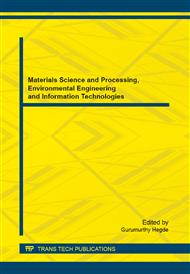p.132
p.136
p.143
p.147
p.151
p.155
p.159
p.163
p.167
Studies on Key Technology and Toughness of Super Sulfate Cement-Based Compound Materials
Abstract:
The traditional high toughness cementitous composites (HTCC) associated with great energy consumption and environmental pollution due mainly to the adding of Portland cement, which greatly limits the popularization and application of HTCC in general construction projects. Therefore the paper proposes a method of super sulfate cement-based composite materials by mixing with super sulfate cement (SSC), which was prepared with slag, industrial by-product gypsum and alkaline, manufactured sand, fly ash and polyvinyl alcohol (PVA) fiber. These super sulfate cement-based composite materials possess accompanied by the characteristic of multiple cracking with micron scale, approximate 20mm ultimate deflection and more than 13MPa ultimate flexural capacity.
Info:
Periodical:
Pages:
151-154
Citation:
Online since:
October 2014
Authors:
Price:
Сopyright:
© 2014 Trans Tech Publications Ltd. All Rights Reserved
Share:
Citation:


